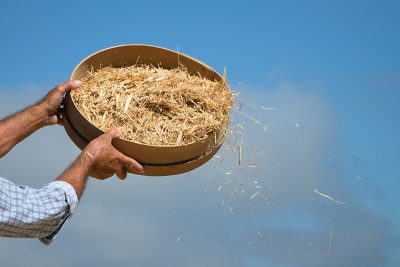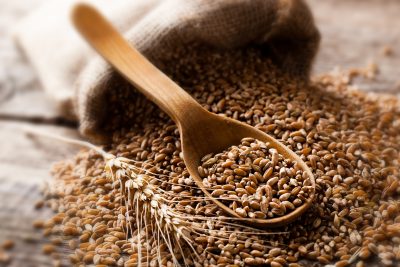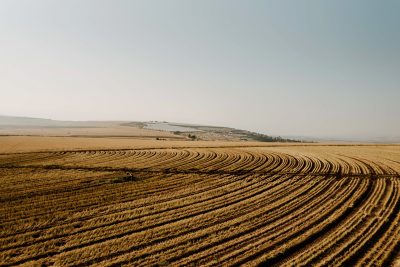×


We have detected your country as:
Please click here to go to the USA website or select another country from the dropdown list.
by: Nathan Williams, Director of Marketing and Communications
Thinking back to the turn of the new year, prophetic voices from across the Christian spectrum were encouraging their audiences to look forward to a year of spiritual clarity and breakthrough. Sayings like “2020—Year of Plenty” and “20/20 Vision” were commonplace on social media feeds. As the year draws nearer to a close, the catchy phrases now seem far removed from the realities we faced in 2020. It is undeniable that the world has changed over the last months. Unemployment, riots and protests seem to be a regular feature on the night-time news. Uncertainty, disunity and anxiety have flourished as many around the world have periodically been placed under lockdown with restricted movement and new regulations being implemented on what we can wear, say and do. It has been a challenging, testing time.
 Many have wondered if this pandemic is part of God’s prophetic plan for the world, or if it was hatched by, as Paul says, “the rulers of the darkness of this world” (Eph. 6:12 KJV). Either way, I am reminded of a pertinent verse in the story of Joseph. After burying their father, Jacob, at the Cave of Machpelah near Hebron, the 12 brothers all returned to Egypt. The brothers responsible for selling Joseph into slavery now feared retribution. Without their father to intervene, would Joseph’s favor towards them fade? In absolute humility, the brothers came before Joseph and prostrated themselves. Joseph’s response carries an eternal truth: “But as for you, you meant evil against me; but God meant it for good, in order to bring it about as it is this day, to save many people alive” (Gen. 50:20).
Many have wondered if this pandemic is part of God’s prophetic plan for the world, or if it was hatched by, as Paul says, “the rulers of the darkness of this world” (Eph. 6:12 KJV). Either way, I am reminded of a pertinent verse in the story of Joseph. After burying their father, Jacob, at the Cave of Machpelah near Hebron, the 12 brothers all returned to Egypt. The brothers responsible for selling Joseph into slavery now feared retribution. Without their father to intervene, would Joseph’s favor towards them fade? In absolute humility, the brothers came before Joseph and prostrated themselves. Joseph’s response carries an eternal truth: “But as for you, you meant evil against me; but God meant it for good, in order to bring it about as it is this day, to save many people alive” (Gen. 50:20).
Joseph had to endure many trials and tribulations, but the Lord used even the wicked schemes of men to bring about His perfect plan of redemption, elevating Joseph to a significant position of authority, influence and wealth. Joseph experienced what can figuratively be referred to as a threshing floor experience.
The threshing floor is a physical place with rich symbolism. It is the place where good is separated from evil, true from false, and what is useful from what is useless. Just like in a physical threshing process where sheaves of grain are beaten or crushed to bring about this separation, we may also endure times of crushing in our spiritual walk with the Lord in order that the good the Lord intended may come forth.
In ancient agrarian communities, the threshing floor was such a central part of life that many non-agricultural activities also took place there. The large, flat surface offered a space for cultural events such as marriage ceremonies and other religious rituals. In this way, the threshing floor was not only an agricultural space but also a sacred space.
In ancient Near East culture, the LORD (YHWH) was the Creator and Sustainer of life, causing rain to fall and bringing forth food from the earth. It is not surprising then that His divine presence was believed to be at the threshing floor, where prophets would see visions and receive prophetic words. After all, the threshing floor was to an agricultural community the very source of their livelihood, resulting in its association with the Creator. As I started to read more about the threshing floor, I was amazed to find that it was not only a symbol of judgment but could also be a symbol of blessing, answered prayer, provision and redemption.
 Being called a man after God’s own heart (1 Sam. 13:14) is probably the highest compliment anyone can receive. However, King David was a man with weaknesses and flaws who faced many threshing floor experiences in his life. In 2 Samuel 24, we read about one such experience. King David ignored the wise counsel of his military commander, Joab, and decided to conduct a census of Israel and Judah. The decision had terrible consequences in that a plague broke out among the people, killing 70,000 Israelites (2 Sam. 24:15). In His mercy, the Lord relented in the midst of judgment, and the Angel of the Lord, sent to destroy the inhabitants of Jerusalem, strangely came to rest at the threshing floor of Araunah (2 Sam. 24:16). Here David humbled himself before the Lord, built an altar and sacrificed on the threshing floor (2 Sam. 24:25). David also bought the threshing floor of Araunah, and years later, his son, King Solomon, built the Temple—the dwelling place of the Lord among men—on that exact spot.
Being called a man after God’s own heart (1 Sam. 13:14) is probably the highest compliment anyone can receive. However, King David was a man with weaknesses and flaws who faced many threshing floor experiences in his life. In 2 Samuel 24, we read about one such experience. King David ignored the wise counsel of his military commander, Joab, and decided to conduct a census of Israel and Judah. The decision had terrible consequences in that a plague broke out among the people, killing 70,000 Israelites (2 Sam. 24:15). In His mercy, the Lord relented in the midst of judgment, and the Angel of the Lord, sent to destroy the inhabitants of Jerusalem, strangely came to rest at the threshing floor of Araunah (2 Sam. 24:16). Here David humbled himself before the Lord, built an altar and sacrificed on the threshing floor (2 Sam. 24:25). David also bought the threshing floor of Araunah, and years later, his son, King Solomon, built the Temple—the dwelling place of the Lord among men—on that exact spot.
The symbolism of the threshing floor is an integral part of this story of redemption. We can identify the crushing that David endured through the loss of life and judgment on his people for his disobedience, followed by the blessing that came after his repentance. It had long been a desire in David’s heart to build the Lord a house, and even though the fulfillment was not realized in his lifetime, the Lord decided to answer David’s deepest desire through his son Solomon.
The spiritual lessons in this story are striking. The threshing floor is the place where our hearts are purified from sin, and the crushing process or tribulation which we endure has a purpose: to reveal within us the good and the bad, the useful and the useless. On the threshing floor, we are confronted with our own weaknesses and failures, but when we have a pure heart, we can meet with God and understand His voice. Eventually, the painful threshing process will be turned to good, fulfilling the long-held dreams and desires of our hearts.
We see a symbolic picture of the character of the Lord as Redeemer in the story of David’s great-grandmother, Ruth. Widowed after the deaths of their husbands, Ruth and her mother-in-law, Naomi, found themselves forsaken and in a hopeless situation. After leaving her homeland of Moab and pledging allegiance to the God of Israel, Ruth returned with Naomi to Judah to find redemption at the hand of Boaz (Ruth 2:8–13). Ruth’s petition to Boaz—her kinsman redeemer, the family member of her late husband who could redeem her from widowhood and restore her to an inheritance—took place at the threshing floor. It is a beautiful picture among the grain and chaff; a person totally surrendered, humbled and in need of redemption.
The threshing floor is then also a place to which the Lord brings us, His children, where we can find redemption. It is also where we can hear our Kinsman Redeemer say: “And now, my daughter, do not fear. I will do for you all that you request, for all the people of my town know that you are a virtuous woman” (Ruth 3:11). Ruth was a Gentile, descended from an idolatrous nation, who left behind her wayward beliefs to follow after the one true God. In the story of Ruth, the threshing floor is an image for a place of purification and humility before God, where He finds us in a place of absolute desperation and provides the door of hope to an inheritance prepared for us.
 There is also an aspect of judgment that takes place at the threshing floor. Referring to Jesus (Yeshua), John the Baptist says, “I indeed baptize you with water unto repentance, but He who is coming after me is mightier than I, whose sandals I am not worthy to carry. He will baptize you with the Holy Spirit and fire. His winnowing fan is in His hand, and He will thoroughly clean out His threshing floor, and gather His wheat into the barn; but He will burn up the chaff with unquenchable fire” (Matt. 3:11–12).
There is also an aspect of judgment that takes place at the threshing floor. Referring to Jesus (Yeshua), John the Baptist says, “I indeed baptize you with water unto repentance, but He who is coming after me is mightier than I, whose sandals I am not worthy to carry. He will baptize you with the Holy Spirit and fire. His winnowing fan is in His hand, and He will thoroughly clean out His threshing floor, and gather His wheat into the barn; but He will burn up the chaff with unquenchable fire” (Matt. 3:11–12).
This imagery is reinforced in the parable of the wheat and tares (Matt. 13:24–43), where the world is a field and the harvest is the end of the age, where reapers are sent out to gather the wheat and burn the tares. All these symbols allude to a threshing floor experience where good and evil will be separated once and for all. Our consolation as believers is that according to John, Jesus is the Master of the harvest that is to come. We can find rest and peace in that fact.
We see this contrasted in the book of Luke, where Satan is doing the sifting: “Simon, Simon, behold, Satan has demanded permission to sift you like wheat; but I have prayed for you, that your faith may not fail” (22:31–32a NASB). We do have an enemy who seeks our destruction. He desires that we would lose our faith in the threshing floor process and that we would be removed like chaff when the winds of separation blow. Remarkably, we know that the Master of the threshing floor is praying for us and interceding for us. Bearing this in mind, we can begin to embrace the threshing for God’s greater purposes—for the building of his eternal Kingdom and for the fulfillment of the redemption story.
My pastor often says: “The Lord is always speaking, but we are not always listening.” During this time of upheaval, the Lord has been speaking. He has been speaking to unbelievers, the Church, politicians and political systems, and each of us individually. The question is: Have we been listening? Perhaps we have to acknowledge that the prophecies of plenty and perfect vision came in a package that we did not recognize or expect. Maybe we need to concede that the redemption of the Lord comes through a process of crushing, tribulations and threshing so that many people can be saved and good brought forth from evil. Our world is being shaken, crushed and I believe brought ever nearer to the final threshing floor, where the wheat will be gathered into storehouses and the chaff gathered to be thrown into the fire.
If we are indeed in this season of physical threshing, it is in preparation for something greater to come. We need to be prepared mentally and spiritually to step onto God’s threshing floor with our lamps filled with fresh oil. It is where we will meet and commune with our Kinsman Redeemer. The threshing will result in the greatest blessing and redemption that He has prepared for us. Our promise is that the Lord will not thresh beyond what we are able to stand: “Grain for bread is crushed, indeed, he does not continue to thresh it forever. Because the wheel of his cart and his horses eventually damage it, he does not thresh it longer. This also comes from the LORD of hosts, who has made His counsel wonderful and His wisdom great” (Isa. 28:28–29 NASB).
Photo Credit: Click on photo to see photo credit
Dye, D. “Understanding Temple Idioms: The Threshing Floor.” Academia. https://www.academia.edu/15170482/Understanding_Temple_Idioms_The_Threshing_Floor
Geoffrey W. Bromiley. International Standard Bible Encyclopedia. Grand Rapids: William B. Eerdmans Publishing Company, 1995.
Grey, D. “A Study on Chaff in Bible Times.” BasicChurch.org. https://basichurch.org/6-a-study-on-chaff-in-bible-times/amp
Waters, J. L. “Threshing Floors as Sacred Spaces in the Hebrew Bible.” PhD Diss., The Johns Hopkins University, 2013.
All logos and trademarks in this site are property of their respective owner. All other materials are property of Bridges for Peace. Copyright © 2025.
Website Site Design by J-Town Internet Services Ltd. - Based in Jerusalem and Serving the World.